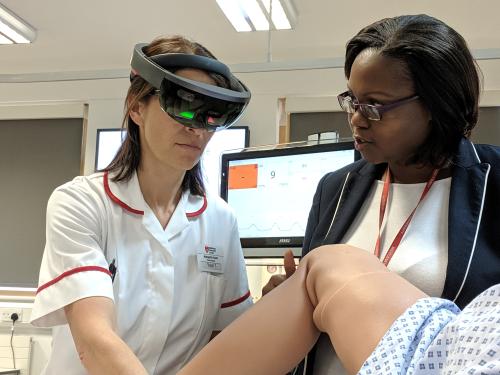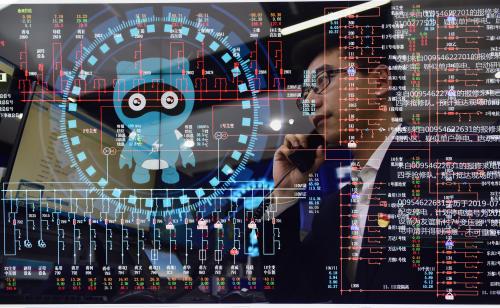Automation in manufacturing has created an employment paradox: robots and computers have automated many routine tasks in recent decades, while new jobs in sectors like manufacturing still go unfilled for want of workers with the necessary skills. In July, the electronics manufacturer Foxconn announced plans to open a new factory in Wisconsin to make LCD displays, but these jobs will likely require different skills than the jobs that have left the state. Just as new technology forces workers to learn new skills, employers could also use it to train workers in those skills. Augmented reality (AR) is one such technology that uses sensors and a network connection to display relevant information on a screen exactly when and where it is needed. Augmented reality shows that the solution to the skills gap may lie in innovative combinations of human labor and computers.
New skills for new technology
AR-adapted glasses combine a camera and photo-recognition software to identify objects and display relevant information on a tiny screen mounted to the frames. In a factory setting, AR can give instructions for a task instead of a printed manual or a supervisor; the digital display frees a worker’s hands to manipulate a tool or machine as they read instructions. These systems also include touch controls and voice recognition for a user to indicate when they are ready to move on to the next step. Workers can quickly capture voice notes, photos, and videos to give managers feedback on work processes. Some manufacturers running AR pilot programs report efficiency gains of over 30 percent.
While more businesses automate routine tasks, humans still excel over robots and artificial intelligence at many non-routine tasks. By overlaying a digital interface on a physical environment, augmented reality can divide tasks between workers and computers depending on which is better suited. After all, robots will still need humans to design, install, and maintain them. Augmented reality demonstrates how technology can expand the capabilities of workers and machines beyond what they could accomplish working separately.
Building technological resilience
Increasingly, new manufacturing jobs require technical training above and beyond a high school education, but employers have proven reluctant to invest in training when workers can take their skills elsewhere. During the time it takes for an individual to obtain a technical certification, skills demands could easily change —as they almost certainly will over the course of a career. Employers and workers alike would benefit from a way to accelerate training to match changing skills requirements. By delivering information in the physical environment where it’s used, augmented reality can condense the amount of time spent in classroom instruction and on-the-job training. AR could assist new and experienced workers alike acquire new skills and ease the transition to new jobs.
A technology that trains workers and records instantaneous feedback makes both workers and employers more resilient to technology change. Employers can easily upload instructions on how to use new equipment and complete new processes, allowing them to hire workers with a more general skillset. Workers can more easily learn new skills as old ones become obsolete. With the benefit of faster skills acquisition, workers need not exit the workforce to update their skillsets, and employers would not have to recruit replacements with expertise in new technologies. Augmented reality allows firms workers and firms to proactively adopt new technologies rather than become displaced by them.
The Brookings Institution is committed to quality, independence, and impact.
We are supported by a diverse array of funders. In line with our values and policies, each Brookings publication represents the sole views of its author(s).









Commentary
Can augmented reality bridge the manufacturing skills gap?
August 10, 2017